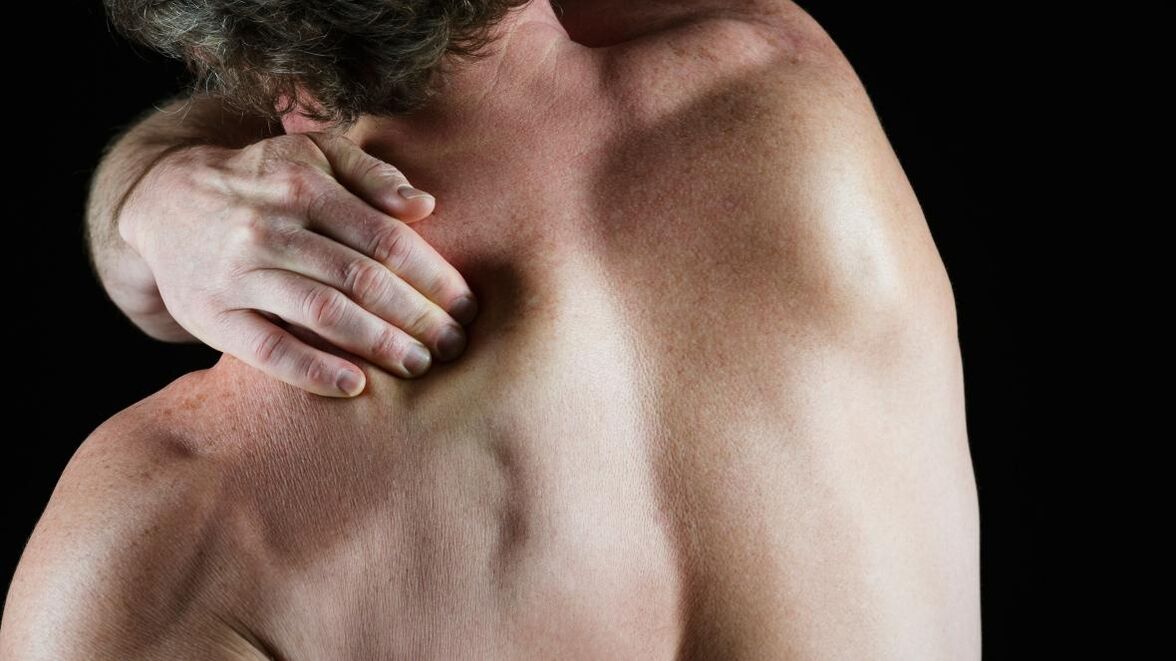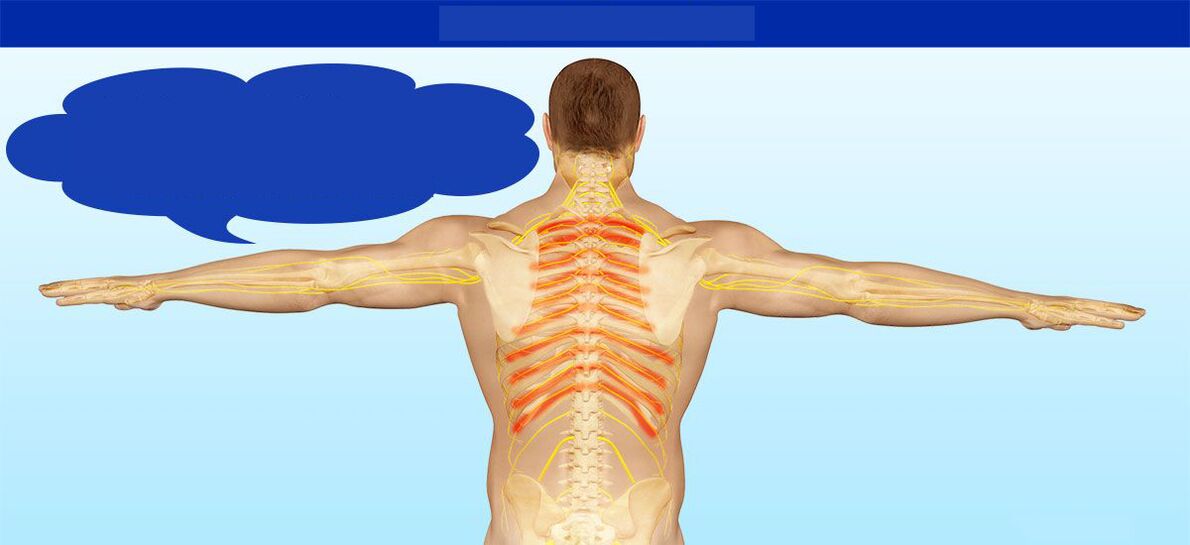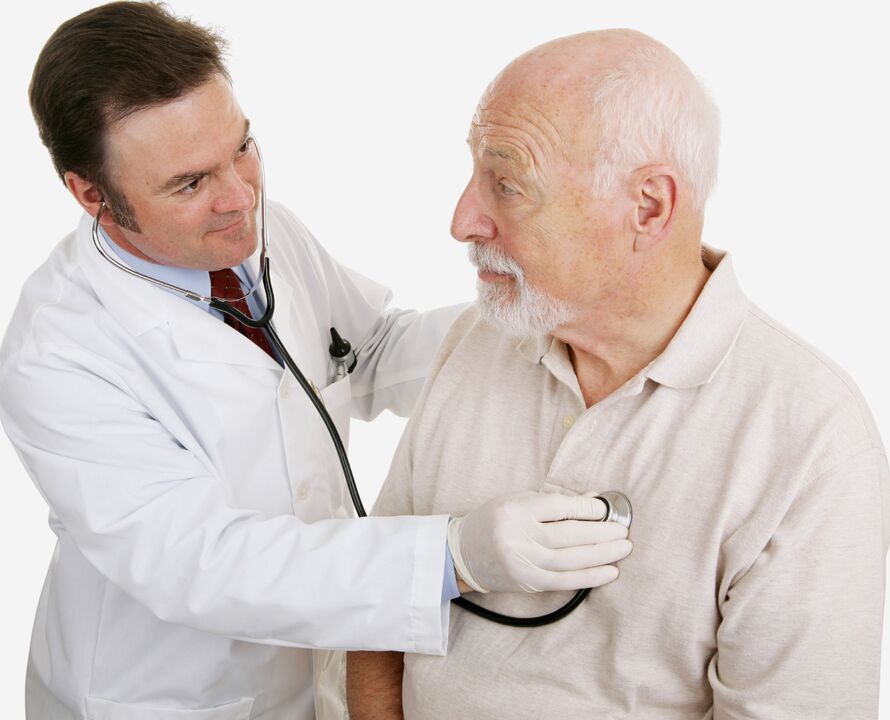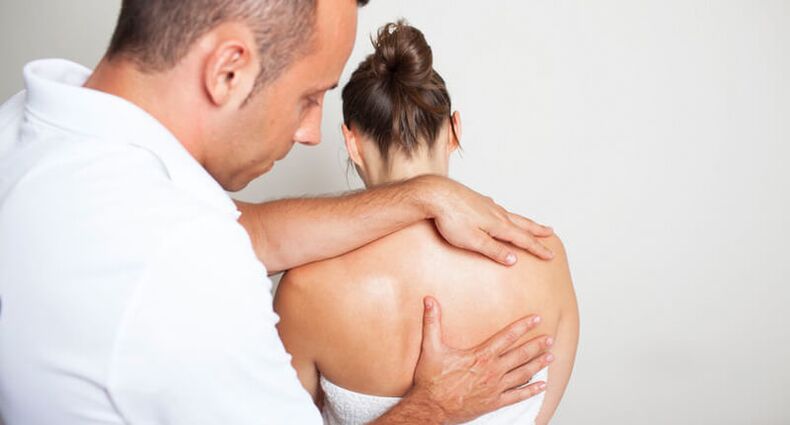
Pain from the back to the back under the left shoulder blade occurs in people of all age groups, including young children and the elderly.
This fact is due to a variety of reasons that lead to negative feelings, from staying in an uncomfortable position for a long time to serious body lesions.
A little anatomy
The scapula is a flat, triangular bone that is adjacent to the thoracic cavity from the back in the area of the second to seventh ribs. Perform binding, protection, reinforcement and movement functions.
The scapula connects the waist belt of the upper limb to the arm and sternum. It protects the shoulder joints and protects the lungs and aorta from mechanical stress. Certain muscles extending from the scapula are designed to strengthen and support the shoulder joint. Because these parts of the bones ensure the mobility of the shoulder straps, their functions even extend to the lower limbs. The bones have nerve roots emanating from the cervical and thoracic region.
Classification
The underlying causes of left scapula pain are varied. The painful feeling may be;
- pain;
- Like dull pain
- As the intensity increases;
- Ear-piercing when panting;
- pull;
- combustion;
- Permanent, not passed;
- Stabbing (back pain);
- Depressive
- pulsation;
- View.
important! The cause of pain is usually an uncomfortable posture for a long time and muscle stretching due to physical exertion. They disappear on their own and usually do not require medical intervention.
The long-term pain syndrome and its systemic nature make it necessary to consult a specialist. Acute pain in the area of the left scapula requires urgent medical care, because this factor does not rule out the manifestations of angina, the deterioration of gastric ulcers, the activation of the inflammatory process of the pancreas.
Pain that affects the lower part of the left scapula from the back is usually the result of injury, musculoskeletal disease, and internal organ disease.
Musculoskeletal system
The pathology of the musculoskeletal system is caused by various injuries:
- Breaks and cracks caused by impacts, falls, traffic accidents, etc. When a person exercises, the pain will increase. In addition, the damaged area is swollen, bruises appear, and mobility is reduced;
- Dislocation is observed in rare cases and occurs when the arm is hit hard or the shoulder blade is hit. In this case, the bone will rotate, shift, and be in an abnormal position. Its lower edge is compressed between the ribs.
The muscles connecting the shoulder blades to the spine are under too much pressure, and the stretch may break.
Pain in the left shoulder blade area of the back caused by trauma occurred immediately after the injury and disappeared as the patient recovered.
In addition to injuries, pain in the scapula area of the back is usually caused by diseases of the musculoskeletal system.
Subscapular pain syndrome is a consequence of cervical osteochondrosis (a dystrophic degenerative process of the spine's intervertebral discs). It is spontaneous and may be painful and tugging. When a person stays in a sitting position for a long time and is physically exhausted, the pain will increase. Taking medication does not relieve symptoms.
The squeezed and inflamed intercostal nerves can cause unbearable pain in the sternum and its running area. The syndrome is exacerbated during a person’s exercise, when he coughs, sneezes, inhales deeply, and changes body posture. Permanent or paroxysmal pain syndrome is sharp, intense, and shooting. Sometimes soreness is manifested in the heart area, lower back, and reflected on the neck and arms. It also affects the shoulder blades.

The manifestations of intercostal neuralgia are similar to those caused by heart problems, cholecystitis, angina pectoris, and pleurisy. Only qualified experts can make a correct diagnosis.
Because the shoulder tendons and shoulder joint capsule are inflamed, but the joints and cartilage are not directly damaged (arthritis), the pain can affect the shoulder joint, and sometimes the area between the scapula and the bone itself. They differ in clarity and magnification at night. The disease is accompanied by slight swelling of the shoulders, the body temperature rises 37-37. 4 ºC, and the circular movement of the shoulders is restricted. Pathology is common and is diagnosed as the result of injuries, bruises, and increased pressure on the shoulder joints.
Inflammation of the neck muscles (myositis) is caused by overwork or infection. Severe pain can affect the entire neck and arm area, radiating to the scapula, occipital area and arms.
Muscle pain in the scapula area is manifested as physical strain or impact on bones.
The pain of malignant lesions of bone structure or soft tissue refers to the initial manifestation of the disease. At first, there is no difference in their intensity and they appear periodically, which complicates timely diagnosis. The development of the pathological process leads to an increase in the severity of negative feelings, which bother a person even at rest, mainly at night. Not eliminated by non-narcotic analgesics. In addition, the bone deforms, the surrounding tissues swell, the skin on the malignant lesion changes, and fractures unrelated to the injury occur.
If there is a skeletal inflammation process (osteomyelitis) caused by Streptococcus, Staphylococcus, Salmonella, Escherichia coli, and other infectious sources, the patient will be exposed to high temperatures, chills, and an increased heart rate. There are complaints of back pain in the scapula and muscle area. When the abscess is opened, the back pain will be relieved.
consider! Pain below or above the left scapula and in the skeletal area is inherent to congenital abnormalities. These include hypoplasia (lack of organs), hypoplasia (underdeveloped bones), pterygoid scapula, and Sprengel disease. At the same time, a person often suffers from cosmetic defects and limited physical activity.
Herniated discs and cervical discs cause bone formation to compress nerve roots, which can cause pain during exercise, especially when the head is tilted.
Heart and blood vessels
Back pain under the left scapula is usually the result of cardiovascular problems.
Chest pain in the center or left side, accompanied by dilation of the upper part of the body, is a sign of myocardial infarction. At the same time, there may be a strong burning sensation from the back under the left shoulder blade. It is impossible to clearly describe the pain syndrome. It may be painful or it may manifest itself in an acute form.
Insufficient blood supply to the heart muscle can cause angina pectoris, which is characterized by compression or squeezing chest pain, which usually radiates to the left scapula, arm, and jaw. In this case, blood pressure will rise, sweating and pale.

Attacks of angina usually occur under stress or increased physical exertion. They are blocked by nitroglycerin. When the duration of the pain syndrome exceeds 20 minutes or the medication cannot be relieved, a myocardial infarction is suspected.
Hypertension or atherosclerotic lesions cause an aortic aneurysm (enlargement) or dissection (incomplete rupture or tear of the endothelium, followed by blood spreading between the layers of the vessel wall).
Small aneurysms will not show up in any way. As they increase, the person begins to feel a dull pain in the back. Dissecting aneurysm is characterized by obvious clinical manifestations. When tearing, the painful sensation is sharp and short-lived. It affects the chest and back, causing reflexive blood pressure and fainting. After a period of time, a person will feel a burning sensation in the chest, arms, neck, and under the left shoulder blade. With the help of existing drugs, the syndrome cannot be eliminated. In this case, fatal results are very likely to occur, so urgent medical care is required.
The pain under the left scapula is caused by:
- Ischemia-insufficient blood supply to the heart;
- Pericarditis-an inflammatory process of the pericardium;
- Endocarditis-an inflammatory disease of the lining of the heart;
- Myocarditis-inflammation of the heart muscle.
Disorders of the autonomic nervous system can lead to vegetative dystonia. The disease is characterized by multiple manifestations, including pain syndrome under the left scapula, similar to the heart. In addition, a person may experience symptoms such as irritability, memory loss, and increased sweating.
Respiratory system
Respiratory diseases do not rule out the pain under the left scapula.
With pneumonia on the left side, chest pain or weak pain under the left scapula-a dull, painful feature that is aggravated by exercise or deep breathing. Accompanying symptoms include temperature rise to a critical value, shortness of breath, and shortness of breath.
With the formation of the necrotic cavity of the left lung, accompanied by the inflammatory process and the formation of pus, pain syndromes are observed in the chest area, and in some cases the scapula is irradiated. Pathologically accompanied by cough, pus in sputum, shortness of breath, shortness of breath when breathing.
The diagnosis of left pleurisy (pleural effusion) is based on the following symptoms: acute chest pain, sometimes radiation under the scapula, fever, shortness of breath, dry cough and other manifestations.
important! Almost all respiratory diseases with pain are characterized by coughs of different nature.
Pain under the left scapula may also occur due to acute bronchitis, bronchitis, or tracheobronchitis.
Gastrointestinal tract
Pain in the left scapula area is usually inherent to gastrointestinal pathology and requires urgent medical intervention.
For ulcerative lesions of the stomach and duodenum, paroxysmal pain is characteristic. Long-term hunger causes them. They can appear immediately after a meal or later.
Perforated ulcers cause acute and unbearable pain, accompanied by fever, nausea, vomiting, etc. Failure to provide help to the patient within 12 hours after the onset of onset can lead to acute poisoning and possibly death.
The acute form of pancreatic inflammation can cause pain in the upper, middle, or left side of the abdomen. In some cases, they will fall off under the shoulder blades. Pathology causes nausea, vomiting, bloating, and other digestive diseases.
Some injuries can cause the spleen to rupture. This will not cause immediate internal bleeding, but it will cause a dull pain under the left scapula. In this case, delay in treatment may cost the patient's life.
In addition, esophageal spasm, calculous cholecystitis, gastroesophagitis, and reflux can cause pain in the left scapula.
Diagnosis and treatment
In each case, the expert will ask the patient about the accompanying manifestations, palpate the painful area, understand the stability of blood pressure and heart rate, to rule out pathological processes that may require urgent action.

Self-diagnosis is strictly prohibited. If the back is painful for a long time for no reason, it is necessary to see a therapist. Based on the general clinical situation, they will determine whether a special diagnosis is needed.
Use the following methods to accurately determine the cause of the pathology:
- General and biochemical blood tests;
- Urinalysis;
- Radiography of possible problems with the musculoskeletal system and respiratory organs;
- ECG rule out heart disease;
- Insufficient data obtained from computed tomography, magnetic resonance imaging, and radiography;
- Fibrogastroduodenoscopy is suspected of gastrointestinal disease.
Based on these diagnostic measures, the therapist determines the cause of the pain, and then refers to the narrow doctor (traumatologist, chiropractor, cardiologist, gastroenterologist, or neuropathologist) who determines the treatment plan.
important! For pain under the left scapula, analgesics will only weaken the syndrome and often prevent a reliable diagnosis. As part of comprehensive treatment, painkillers can only be prescribed by a specialist.
There is no universal treatment for pain under the left scapula. As the patient recovers, the negative symptoms will gradually disappear. Treatment aims to eliminate the underlying disease and involves multiple methods.
In order to avoid pain in the scapula area, you should pay attention to your health. If you have negative symptoms, you should immediately seek the help of a specialist.




























